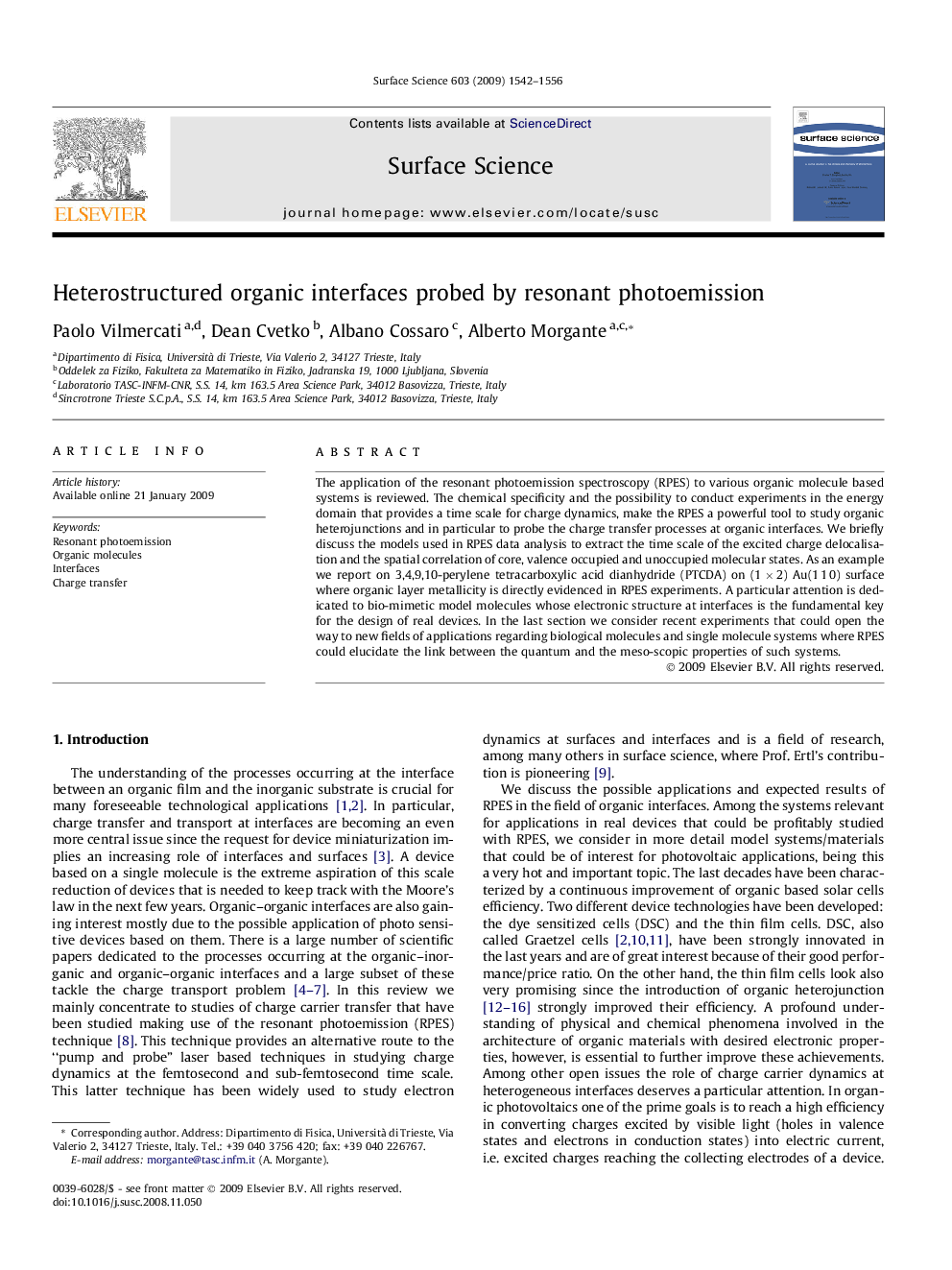| Article ID | Journal | Published Year | Pages | File Type |
|---|---|---|---|---|
| 5424210 | Surface Science | 2009 | 15 Pages |
Abstract
The application of the resonant photoemission spectroscopy (RPES) to various organic molecule based systems is reviewed. The chemical specificity and the possibility to conduct experiments in the energy domain that provides a time scale for charge dynamics, make the RPES a powerful tool to study organic heterojunctions and in particular to probe the charge transfer processes at organic interfaces. We briefly discuss the models used in RPES data analysis to extract the time scale of the excited charge delocalisation and the spatial correlation of core, valence occupied and unoccupied molecular states. As an example we report on 3,4,9,10-perylene tetracarboxylic acid dianhydride (PTCDA) on (1Â ÃÂ 2) Au(1Â 1Â 0) surface where organic layer metallicity is directly evidenced in RPES experiments. A particular attention is dedicated to bio-mimetic model molecules whose electronic structure at interfaces is the fundamental key for the design of real devices. In the last section we consider recent experiments that could open the way to new fields of applications regarding biological molecules and single molecule systems where RPES could elucidate the link between the quantum and the meso-scopic properties of such systems.
Related Topics
Physical Sciences and Engineering
Chemistry
Physical and Theoretical Chemistry
Authors
Paolo Vilmercati, Dean Cvetko, Albano Cossaro, Alberto Morgante,
